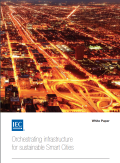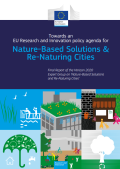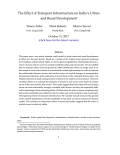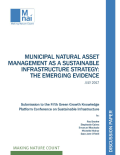This policy brief, Disruptive Innovation and Win-Win Strategies for the Sharing Mobility Economy, published as part of the Green-Win project provides insights into the disruptive innovation of the sharing economy which is occurring in the urban mobility sector. Sharing mobility promotes win-win strategies that aim to provide short-term socioeconomic benefits and longer-term environmental impacts through mitigation and adaptation gains and therefore to enhance sustainable development in cities. Disruptive innovations, like mobile apps can coordinate on-demand vehicle and ride sharing at unprecedented scales, transforming urban mobility. Although social and technological sharing innovations may address multiple urban problems, there is an ‘adaptive lag’ in governance which is fostering new environmental problems. A collaborative governance regime to support win-win sustainability strategies in the shared mobility sector is needed between mobility companies, users and the public, and city governments. The analysis is illustrated through examples investigated in the Green-Win project.


Nature-based solutions simultaneously provide environmental, social and economic benefits by bringing more nature and natural features and processes into cities, landscapes and seascapes. The Horizon 2020 Expert Group on ‘Nature-Based Solutions and Re-Naturing Cities’ was established under the 2014 Work Programme for the Societal Challenge “Climate action, environment, resource efficiency and raw materials”. For this report, renowned experts engaged in forward-looking reflection on future orientations for EU Research and Innovation for Nature-Based Solutions and Re-Naturing Cities.
An EU Research & Innovation (R&I) agenda on nature-based solutions will enable Europe to become a world leader both in R&I and in the growing market for nature-based solutions. For this, the evidence base for the effectiveness of nature-based solutions needs to be developed and then used to implement solutions.

This paper uses a two-sector domestic trade model to study urban and rural development in India over the past decade. Based on a version of the market access approach proposed by Donaldson and Hornbeck (2016), the authors derive general equilibrium relationships between a sector’s income and it’s access to markets in both the urban and rural sectors. Satellite data are used to measure urban and rural growth in 5,900 sub-districts where areas are assigned to either urban or rural sectors based on a threshold for urban light intensity. In order to estimate the relationship between income and market access, the authors exploit changes in transportation infrastructure that have led to reductions in travel times on the computed shortest path. The implied reduction in trade costs generates variation in the market access measures. This time variation allows to estimate the elasticity of income in each sector with respect to market access in the own and the other sector. The results suggest that both urban and rural market access are each individually strongly correlated with income, but they are empirically difficult to disentangle when estimating jointly.

This paper documents an emerging strategy to manage natural assets such as woodlands, wetlands, and creeks in urban areas as part of a sustainable infrastructure strategy. Specifically, the paper explores Canadian local government experience through the Municipal Natural Assets Initiative (MNAI) to identify, value, and account for natural assets’ contribution to municipal government service delivery, services that would otherwise need to be delivered by engineered assets. Evidence from MNAI suggests that a structured, asset management-based approach holds great promise to tackle the twin challenges of declining urban infrastructure quality and declining ecosystem health and could have applicability well beyond Canada.
